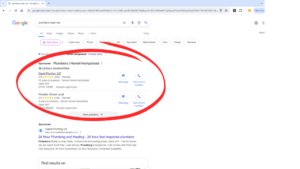“With Black Friday and Cyber Monday around the corner, what does it mean for online retailers?”
Black Friday and Cyber Monday have been ingrained into our pre Christmas run up just like many other ‘official’ days of the year. In the way that Moonpig loves a seasonal holiday, online retailers can get a real boost come November. Mindful that the BFCM weekend is just a part of the ‘golden quarter’ for retailers, the success of BFCM could signal the success of the rest of the season. The secret to getting the most out of BFCM 2018 lies in knowing the trends and maximising your own opportunity.
In the following report, we have taken data from many sources across the internet. Some (Shopify) is based on actual data from their 500,000 shops based on the platform. Others (PWC) is more subjective and is the result of surveying 2,000 adult consumers across the UK. In piecing all of this together, we are able to see significant trends that should hold true for any online retailer ahead of this year’s BFCM event.
When is BFCM?
“A 12% lift in spending on Black Friday may have been the headline, but that doesn’t take into account the fact that the four days prior to it saw anything from a 23% to 33.7% increase in spending – App Institute”
It is clear from the range of data that BFCM is not just 2 days or even a weekend. Some retailers will begin promotions up to 2 weeks ahead of Black Friday and others will extend through the week of Cyber Monday. The clear trend is that the promotion period is being extended each year. There is a definite spike in purchasing on the Friday but given that 28% of purchases happen the day before Black Friday, you can’t afford to be slow on the trigger.
Given that competition for promotions gets higher as we approach the weekend, prices for Google Ads/Paid Ads will increase too and provide less and less ROI compared with earlier placed Ads. This compounds the effect of a reduced margin due to the level of discounts expected.
Our advice is to ‘capture the attention’ early via paid means and then continue to market to potential deal seekers through the period using (GDPR compliant) email.
How does it compare to other weeks?
“An average abandonment rate of 70% for the rest of the year was suppressed to 67% on Black Friday – App Institute”
November is the beginning of the ‘golden quarter’ for online retail as we move closer to the holiday season. That said, there are clear markers that BFCM as an event makes a massive difference to consumer behaviour even within this special period. In the UK we are fourth in the world table when it comes to how far our consumers push BFCM. This also places us not far from the global averages.
All three key indicators see a boost over the period. Traffic is up. This is of course reflective of increased Ads, but Ads do not create traffic, consumer interest does. Conversion rates are also higher showing that the increase in interest, is actioned upon.
Finally, and the only number we consider really significant is actual purchases. In the UK, Black Friday sees a 355% increase and Cyber Monday a 205% increase on the average November day. Remember the normal November day is already higher than other months. Cart abandonment is also reduced, but not significantly enough to factor as high as the other three indicators.
Our advice is to balance keeping an eye on margin as the frenzy to generate sales can mean many are unprofi table. However, also to view this period for its Brand building opportunity in the run up to the holiday season.
What level of spend is expected?
When we look at global averages, entire spend across all sectors etc, it is easy to miss what the actual market for your specific items is. To get an idea, we need to consider the data only within your geographic area and attempt to define how much of that is for items you will have on promotion.
In the UK, online spend rose to £1.39bn in 2017 which was an increase of 11.9% from 2016. Incidentally 2016 figures were up 12.2% from 2015. It is therefore acceptable to suggest a 10% increase for 2018, therefore budgeting £1.53bn for total online spend.
A PWC survey in the UK suggests that 50% of that will be electronics, 26% stocking fillers and 18% toys. Essentially, the ‘fun’ sections. That said, 22% will go to Adult Clothing, 16% Home-ware and 15% on Health and Beauty. Shopify, use different segments and the percentages change, but not massively. Also, Spotify provide global data whereas PWC is UK based. PWC is a survey of ‘what will you spend on’ and Shopify is data of ‘what people actually spent on’.
Our advice is that even on a case of where your products have a 10% relevance, £100 million spend over the BFCM weekend is still a figure that is significant. Therefore the ‘potential size of audience’ will not become an issue and it will be down to how much of that audience you can attract.
Who does the spending?
This is potentially the most significant part of the research when it comes to creating promotions that hit the target audience correctly. Age, Gender and geographic location all play a part. The first thing to note is the spend comes from 50% of the population. Also, there is a ‘wedge’ towards younger adults. The percentage moves from 50% to 70% for under 25’s and 65% for 25-34 year olds according to PWC.
Interestingly, men are far more likely to spend higher over the BFCM weekend. As are people in London. The ideal target is a 24-year-old man living in the city. On the other end of the scale, a 65-year-old lady living in East Midlands is probably unlikely to be spending lots this BFCM.
Our advice is that the profile of an ideal BFCM buyer is well aligned with the profile of customer you are looking for.
Whilst these are always averages and need to be seen as such, they do give us a clear steer on where geographically to spend more or less on display ads and what messaging to include ahead of the BFCM event. Using the trend from 2016 – 2017, It also provides an indication as to the types of product price points that will sell better during these events.
What do they buy?
As previously stated under the ‘what level of spend is expected’ section, there is variety in the data. What we do know is that many of the purchases by menare directly for the person buying. 71% said they would buy for themselves. However 61% said that they would be buying for family, so it’s not all selfish. Women are slightly more generous with 55% buying for themselves and 72% for family.
A common theme was that only 20% of Christmas shopping is done over the BFCM weekend. So, whether for self or others, 80% of the buying is not
for Christmas gifts and probably more towards for ‘self’.
Our advice is that there is a significant proportion of the BFCM spend that will be made by men for themselves and by women for friends and family. The conclusions are fairly obvious in that targetted Ads to men should focus on ‘treat yourself’ whereas to women ‘treat the man in your life’. Especially on platforms such as Facebook where we can advertise to people in a relationship. The Ads can be ven more specific when we look at those who are newly engaged or newly wed.
How do they buy?
“The most used channels for research before buying online include website (74 percent), email (43 percent), social media (38 percent) and a retailer’s mobile apps (36 percent) – Salesforce”
There is only one rising star in this section and it is the mobile device. This is inline with other non BFCM trends where physical stores are seeing less visitors and online stores whilst not only seeing more visitors are also more often being visited via the smartphone screen. There is a special bump to this underlying trend when it comes to BFCM though. It stands to reason given that both Black Friday and Cyber Monday take place on ‘work days’. People are out of the home and either don’t have access to a desktop device or simply need to be more ‘covert’ in their shopping!
This factor is significant when it comes to search marketing. On mobile devices, the organic listings are less prominent and during a period when the majority of Search Ads will be enticing users with massive savings, Search Ads will outperform Organic Search listings.
Our advice is to design and rigorously test the whole process from Ad through to successful checkout on mobile devices more than desktops. Not only is this massively important for BFCM, it is a growing trend for the rest of the year too. Use Search Ads extensively but on very specific phrases and only on deals that are unlikely to be beaten by competitors.
Is this all impulse related?
“The most used channels for research before buying online include website (74 percent), email (43 percent), social media (38 percent) and a retailer’s mobile apps (36 percent) – Salesforce”
We wouldn’t call this impulse buying in that people are primed to expect the event. They didn’t wake up unaware and buy regardless without checking. The early years of BFCM in the UK helped to drive a behaviour where people research their ‘crazy deals’ ahead of the event. There is widespread knowledge that companies use BFCM to offload old models etc. we are in an era of the educated buyer.
However, what is noticeable is that people are willingly priming themselves to buy ‘something’ to get a deal. They will research it before hand and if it is a genuine off er, they are more likely to buy during BFCM than outside of this event. Interestingly cart abandonment only drops to 67% from 70%. This doesn’t signal a frenzy of unconscious impulse buying. Also, to note, as BFCM has crept earlier in the month away from Pay Day, it hasn’t affected the year on year spend growth or average order value. Another confirmation that this is a planned spend.
Notice still how the biggest section of people’s feelings towards buy or not buy, are in the section that needs persuasion. 35% of people are ‘interested and might buy’.
Our advice is that any deals must be genuinely great deals and should be easily researched.
We would advise having a line up of deals ready and removing Ads for products that on the day are not competitive against other Ads. Equally, there may be different price points ready to maximise profits and also be ready to know what the minimum acceptable margin is on a product.
How do you feel about Black Friday?
What is the best way to reach them?
This is where we join up various pieces of data. We know that mobile usage is the key trend regardless of, but specifically during the BFCM period. We also know that search has a significantly higher conversion rate than social. Email tops both channels and is the best way to send out offers and reminders of offers.
With the absence of a strong email list, BFCM is a great opportunity to build a list.
Our advice is to start early with Search and Social Ads that convert people’s curiosity into providing email details. Equally, focus should be given to converting ‘fans and followers’
into email recipients ahead of the BFCM off ers. This is all to build up the list ahead of the actual BCFM weekend. At this point the list will deliver the best conversion rate during the weekend.
The email list alone will not be enough and therefore priority should be given to Search Ads, with Social Ads supporting these. Whilst we would expect Search Ads to outperform Social Ads, we will need both audiences to meet targets. Also, cross platform campaigns work better as each platform influences the other.
What can you take from this?
“In the US, the index found that two thirds of companies failed to load their sites within the 10 second window which research has shown leads to 40% of potential consumers taking their trade elsewhere. In the UK, fewer than 1 in 10 (8%) companies fell foul to this marker – NetImperative”
The first thing to note is that data is often contradictory. In this brief research, we have attempted to cross reference differnt data sets to pick out the key themes that support each other. We are looking for trends and things in common, whilst also looking at data that is wildly contradictory.
Providers of data often have an agenda too. Providers of mobile platforms will boost the significance of mobile visits for example. We have tried to see through this and compile some early insights for you.
If there was such a thing as the perfect target for BFCM, they would be 25-30 year old men living in London with a thing for electrical and technology toys. We would use email to contact them and a mobile friendly site to sell to them backed up with a cart abandonment strategy to maximise sales.
And back in the real world, things are never that clear. However, what we can do from he data is to identify the best way to reach your ideal potential customer. Of course, further research into who that existing customer is and the types of Ads they have previously responded to will make the acquisition process even more efficient.
An obvious, but significant final note is that site speed is critical for conversions. 40% of consumers will simply leave if sites do not load quickly. And in the UK site speed is not a huge issue, so any on-line retailer that does have a slow site, will certainly see conversion rates plummet.


